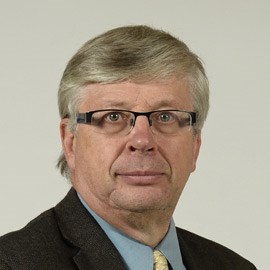The Saskatchewan Party’s Sept. 12 byelection loss in Regina Northeast doesn’t much affect the short-term or even long-term future of this government.
After all, the Sask. Party still holds 48 of Saskatchewan Legislature’s 61 seats, so New Democrat Yens Pedersen’s win changes little.
The truth be told, this city seat was a way bigger deal for the 13-member NDP Opposition than it was for the Sask. Party.
Because funding at the Saskatchewan Legislature is directly tied to the number of MLAs a party has, another member means more in Opposition because it means money to hire staff researchers and communicators.
Moreover, losing a city seat would not have looked good for the NDP.
But a loss in a city seat — even one it held — isn’t much of threat to the Sask. Party’s long-term viability, either. Here’s why.
Pedersen’s approximate 730-vote win (the official Election Saskatchewan tally is yet to come) is a healthy enough win.
And for the NDP, it does mark a significant turnaround from the former Sask. Party finance minister Kevin Doherty’s 2011 and 2016 wins that were by even wider margins.
This win now followed two other city NDP byelection wins in Saskatoon Meewasin (Ryan Meili) and Saskatoon Fairview (Vicki Mowat) since the 2016 election.
This has added significance because the federal election scheduled for 2019 will see two sitting MLAs — Corey Tochor in Saskatoon and Warren Steinley in Regina — contest seats for the federal Conservatives. That means their current respective seats of Saskatoon Eastview and Regina Northwest will face byelections because the next provincial general election won’t be until 2020. Law states no legislative seat can be vacant for more than six months.
Two more city seat byelection losses for the Sask. Party is a distinct possibility. Given the trend we witnessed in Regina Northeast, one might think a couple more byelection wins would give the NDP plenty of momentum going into that 2020 general election.
But we need to remember just how solid the Sask. Party is in rural Saskatchewan.
Between the NDP wins in the two Saskatoon byelections and its win earlier this month in Regina Northeast, the Sask. Party won three rural elections in Kindersley (won by Ken Francis to replace Bill Boyd), Swift Current (won by Everett Hindley to replace Brad Wall) and Melfort (won by Todd Goudy to replace the late Kevin Phillips).
Kindersley is solid conservative country. You’d have to go back to the Tommy Douglas era to find a time when the CCF/NDP last had a legitimate shot of winning. Both Swift Current and Melfort did flirt with NDP representation after the demise of the Grant Devine Progressive Conservative government.
However, it’s been 27 years since Devine was in power and everywhere in rural Saskatchewan has become rock solid for the Sask. Party. Or at least, that’s what the recent byelections suggest.
The margins of victory for the Sask. Party candidates in the three rural byelections was between 75 per cent and 85 per cent of the popular vote. By comparison, the margins of victory by NDP candidates in the three city byelections was between 50 and 60 per cent.
Pedersen’s win in Regina Northeast was solid enough, but this part of the city voted NDP for 40 years prior to Doherty.
There are more than a dozen urban seats in Regina, Saskatoon, Moose Jaw and Prince Albert, all of which, the Sask. Party now hold, that will be tougher for the NDP to win.
And besides having to win all of these city seats, the NDP byelections would still have to make a breakthrough somewhere in the Sask. Party’s rural fortress.
Recent byelections suggest there is no chance of that.



